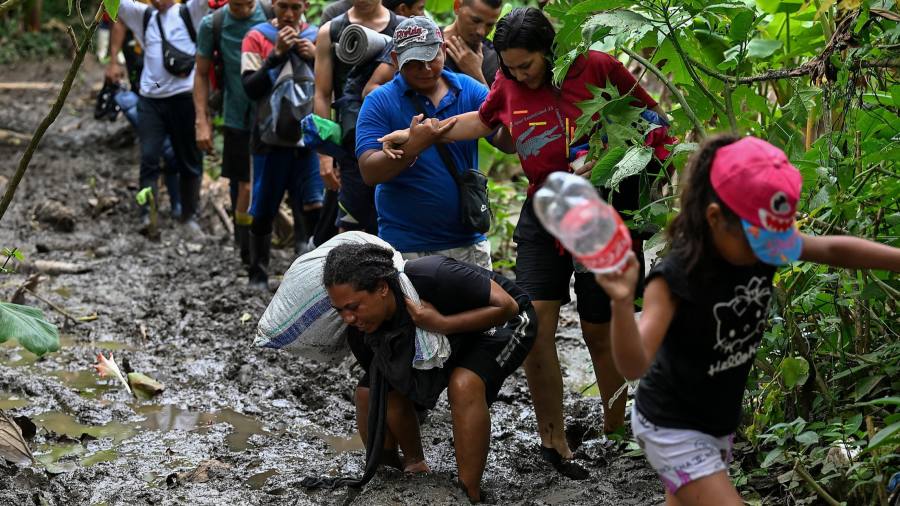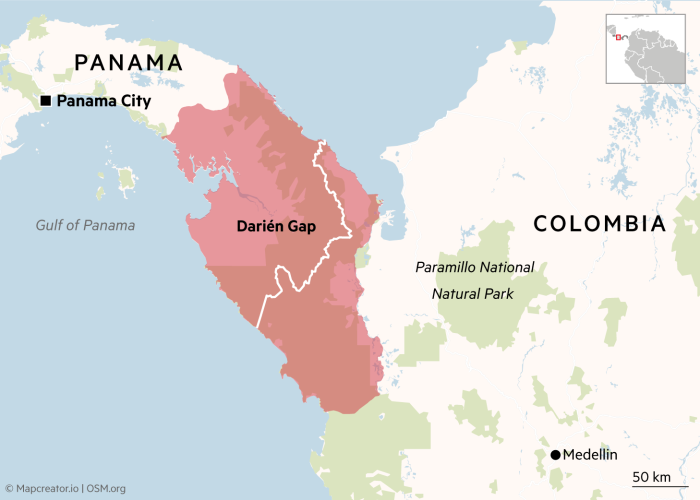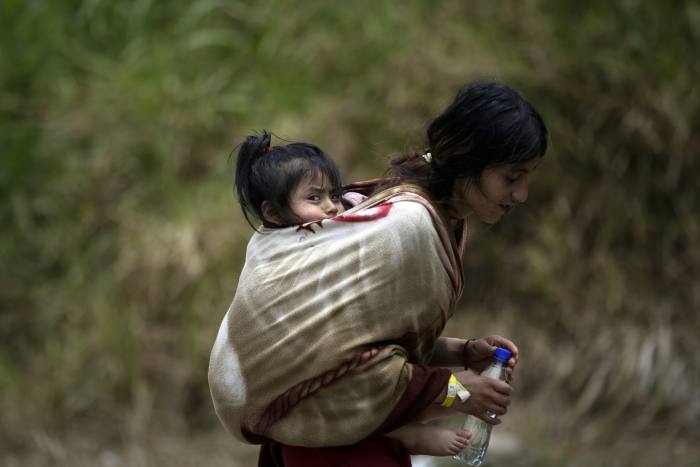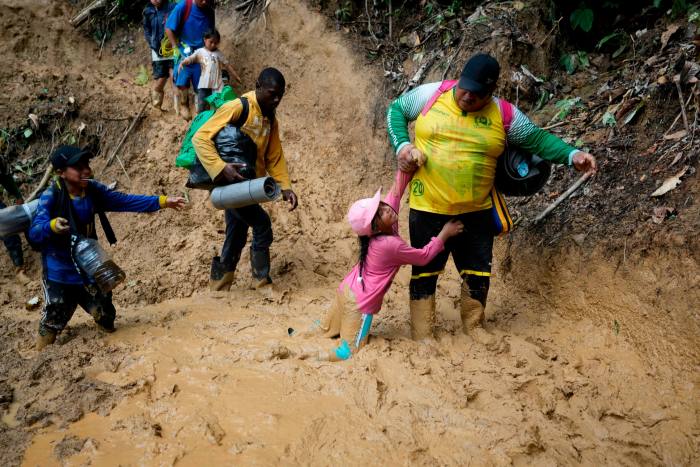
Panama is warning of a big surge in irregular migration through the deadly jungle of the Darién Gap; the number of people using the route to reach the US is expected to almost double this year to 400,000, according to the country’s foreign minister.
Last year according to official Panama government figures, 248,284 migrants crossed the swamp-filled, roadless region, which is plagued by bandits and poisonous snakes, seeking to escape poverty and repression in Latin America and from as far afield as China, Afghanistan and elsewhere.
Janaina Tewaney said in an interview that on current trends, “we expect 400,000 people” this year to traverse the region.
Almost 2.4mn migrants were apprehended at the US southern border in the fiscal year to September 30 2022. Officials have described the flow as the biggest migration crisis faced by the Americas in modern times.

More than 7mn people have fled Venezuela, where the revolutionary socialist government led by president Nicolás Maduro has presided over economic collapse and grave human rights abuses.
Many of those using the Darién route were smuggled to the Colombian border by criminal gangs, who deceived them about the true nature of the seven to 10-day jungle trek, said Tewaney. Panama has launched a campaign of TikTok videos showing the horrors of the journey as part of an effort to encourage migrants to use safer routes.
“They don’t tell you are going to cross the Darién, which is a hostile jungle,” Tewaney said. “They tell you, ‘it will take a day to go across and I’ll leave you here’ . . . there are a lot of people who die.”

The previously pristine region — “the most sacred and most protected ancestral area” for the Emberá, Wounaan and Guna indigenous communities — was now suffering environmental damage, she added.
Some 49,291 people reached Panama via the Darién in the first two months of this year, more than five times the number who did so in the same period a year earlier, according to official Panamanian figures. On March 14 alone about 1,000 people made the crossing, Tewaney said.
Just over a third of migrants using the route so far this year were from Haiti, where a surge in gang violence, chronic poverty and the near-total collapse of government authority have triggered an exodus.

Chinese migrants have also started to travel via the Darién. Some 2,198 Chinese crossed into Panama through the jungle in the first two months of this year, more than in the whole of last year.
Officials said the Chinese migrants appeared to be flying to Ecuador, where they do not need visas, and travelling on through Colombia to the Darién.
Tewaney, who served as interior minister prior to taking the foreign affairs portfolio last October, said she was not opposed to migration. She pointed out that, like many Panamanians, she had a migrant parent: her father came from India. “What we want is more organised migration,” she said.
Panama spent $50mn sheltering and feeding migrants last year and was working closely with the US to manage the situation better.
“It’s a human crisis,” the minister added. “The key to this is co-ordination [and] co-operation . . . and obviously to attack the causes of that migration, the lack of opportunities is a big factor”.

